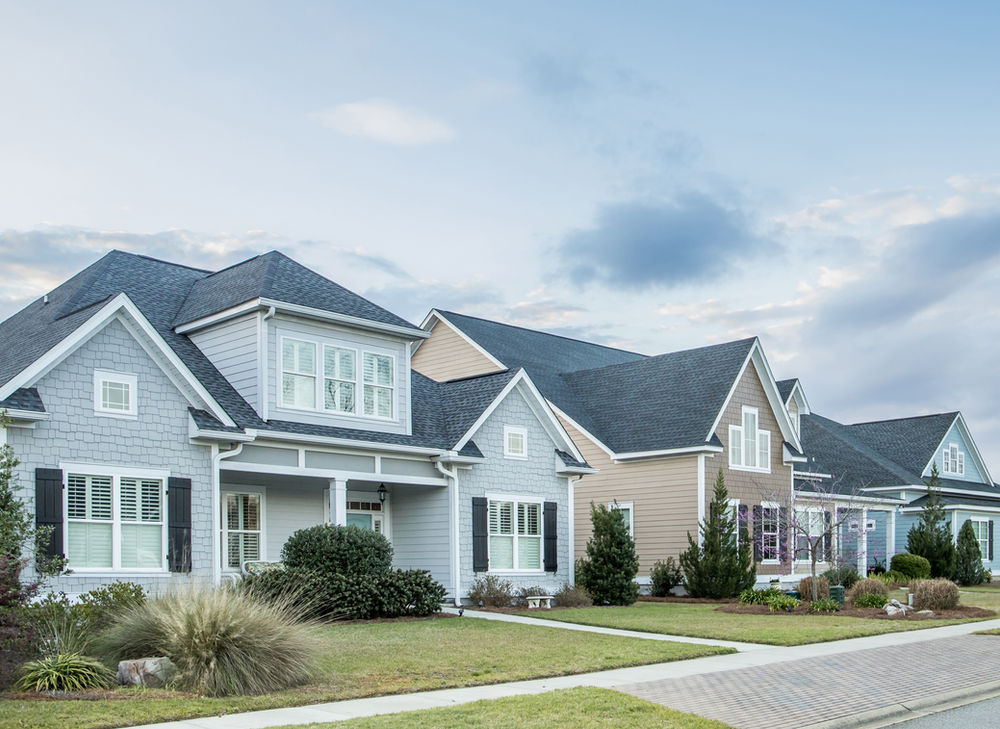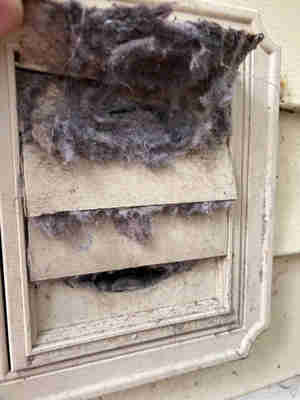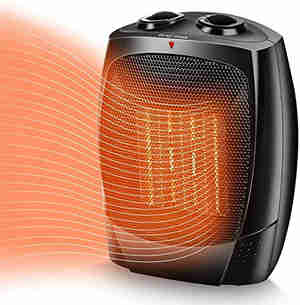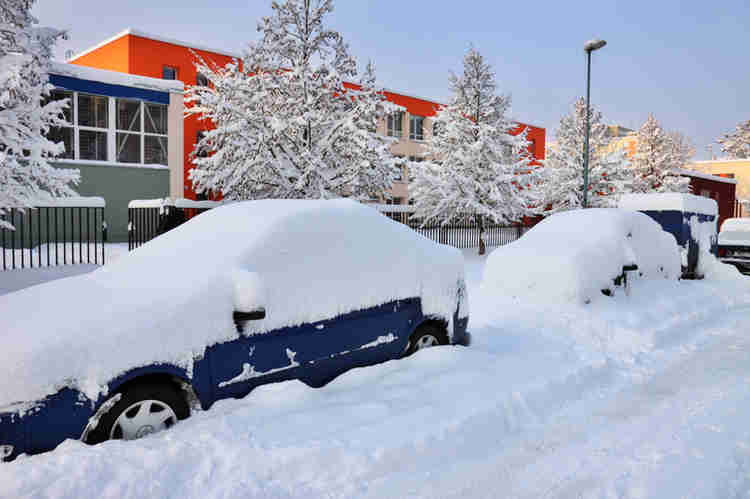Changing Seasons – Are you prepared for what's next?

The changing seasons bring beautiful fall foliage, cooler temperatures and for some of us snow. Regardless of what part of the country you live in there are certain maintenance that needs be done around your home. Here are some practical reminders and tips to make sure your home and family is safe during the changing seasons.
Smoke Detectors
Smoke detectors are one of the most important safety devices you can install in your home. Once you’ve installed smoke detectors, It’s absolutely vital to test them regularly to ensure they work during a fire.
Use these steps to ensure that your smoke detectors are working properly:
· Press the test button on the unit and wait for it to sound.
· Light a candle and hold it 6 inches below the detector so that the heated air will rise up
into the detector.
· If the alarm doesn’t sound within 20 seconds, blow the candle and let the smoke rise.
· If the alarm still doesn’t sound, it may be time to change the battery. A great way to
remember to change your smoke detectors batteries is to do so twice a year – during
daylight saving time. Most newer smoke detectors come with a long life battery but
should still be tested.
· If the detector still isn’t working. It should be replaced immediately. It’s recommended that smoke detectors be replaced every 10 years.
Furnaces
With rising utility costs it’s important that we keep our furnaces operating at their best and not make them a safety hazard. Follow these steps to increase your furnace’s life & efficiency:
· Replace your filters as needed.
· Have your furnace inspected on an annual basis.
· For direct vent units, make sure there is no obstruction of the exhaust pipe.
· Change the furnace humidifier filter.
Clothes Dryer

One of the most neglected appliances in our households are the clothes dryers. A lack of maintenance is the number one reason for dryer fires. Fires from clothes dryers account for over 2,500 serious injuries or death and $35 million in property damage each year. With this in mind, here are some clothes dryers dos and don’ts to follow in order to help keep both you and your family safe:
· Do clean the lint filter before and after
each load of laundry.
· Do regularly clean the area behind
the dryer where lint can get trapped
as well.
· Do replace plastic or vinyl exhaust
hoses with metal venting.
· Don’t dry clothing or fabrics that contain flammable solutions, such as alcohol, cooking
oils, gasoline. These substances give off vapors that can ignite and explode.
· Don’t overload your dryer. This cause dryer to break down.
Leaves and Gutters
Everyone enjoys watching the leaves change colors in the fall and as they gently make their way to the ground. However, this enjoyment can quickly turn to frustration as the leaves end up in gutters, blocked storm drains, sidewalks, etc. To avoid potentially expensive damage and headaches follow these simple tips:
· Clear leaves and debris from gutters and downspouts to prevent flooding around your
foundation. and freezing Inside the gutters which can contribute to ice damming.
· Rack and clear leaves from your lawn t prevent rotting and killing of grass.
· Clean leaves off driveways and sidewalks as they become a slip and fall hazard for
pedestrians.
· Clear leaves from storm drains to avoid water flowing to your home.
Wood-burning stoves and fireplaces
There is nothing better than a warm fire on a cold night. It’s important to follow these tips to keep your family safe:
· Read instructions on proper usage of wood burning stoves.
· Don’t use flammable or combustible liquid (e.g., gasoline, kerosene or lighter fluid to start
a fire.
· Burn wood recommended by the manufacturer only.
· Don’t burn plastic, wood or garbage that has been painted or treated with chemicals.
· Have regular inspections of chimneys, fireplaces and stoves.
· Make sure that ashes are totally cooled before removing them and put them in a metal
container with a lid.
· Don’t leave any type of fire unattended.
Space Heater safety

Space Heaters are another good, economical way to keep your home warm when used properly. Space heaters present 50% of U.S. Home Heating Fires and 86% of associated deaths. It’s not because the device or the equipment is unsafe, it’s because people don’t use them safely.
Here are some tips on properly using a space heater:
· Pick a safe location. Space heater
should be placed on a flat, dry and
level surface to
help avoid tip-over and injury.
· Follow the 3-foot rule. Ensure your space heater is positioned at least 3 feet away from
any flammable objects or substances. Having items within 3 feet can pose a serious fire
hazard.
· Avoid extension cords. Always plug your space heater directly into an outlet to decrease
chances of overheating, electrical shock, and fire.
· Check safety features. Read the instruction manual and safety tag on your space heater
before operating it to confirm it will automatically shut off if tipped over or becoming
overheated.
· Shut it off, before leaving your home, always turn off your space heater and unplug it
from the outlet.
WINTER DRIVING
It never fails – every time we have that first snowfall the news is filled with stories of multi car accidents and pile ups, cars off the side of the road and auto repair shops full of damaged vehicles. You can prevent being a victim by following these safety tips:
Keep a bundle of cold-weather gear in your car, such as extra food and water, warm clothing, a flashlight, a glass scraper, blankets, medications, and more.
Make certain your tires are properly inflated and have plenty of tread.
Keep at least half a tank of fuel in your vehicle at all times.
Never warm up a vehicle in an enclosed area, such as a garage.
Do not use cruise control when driving on any slippery surface, such as on ice and snow.
Drive slowly. Always adjust your speed down to account for lower traction when driving on snow or ice.
Accelerate and decelerate slowly. Apply the gas slowly to regain traction and avoid skids. Don’t try to get moving in a hurry and take time to slow down for a stoplight. Remember: It takes longer to slow down on icy roads.
Increase your following distance to five to six seconds. This increased margin of safety will provide the longer distance needed if you have to stop.
Know your brakes. Whether you have antilock brakes or not, keep the heel of your foot on the floor and use the ball of your foot to apply firm, steady pressure on the brake pedal.
In a skid, don’t steer against the skid and avoid using the breaks.
CLEARING SNOW

Playing in the snow can be fun but having to clear it can be a chore. It’s important to follow these steps to keep you, your family and property safe during the winter months.
Shoveling Snow:
National studies show that most common shoveling related injuries were to the back or heart. Cardiac cases account for 7% of all injuries but were the most serious in nature.
Warm your muscles before heading out
Pushing the snow with the shovel instead of lifting can help reduce the strain on your body.
Ergonomically designed shovels can help reduce the amount of bending you have to do.
Consider using a lighter-weight plastic shovel instead of a metal one to help decrease the weight being lifted.
Pace yourself and be sure to take frequent breaks.
Consider shoveling periodically throughout the day.
Try to shovel snow shortly after it falls, when it is lighter and fluffier.
Dress in layers and remove them as you get warm to help maintain a comfortable body temperature.
Drink plenty of water to stay hydrated while shoveling.
Snow Blowing:
· Be aware of where you are aiming the shoot.
· Never blow snow toward people or cars.
· Do not override automatic shutoff features.
· Operate the blower at a speed no faster than a walk.
· NEVER REACH into the blower shoot with your hands for any reason, even if the machine
is off.
· Read the operator’s manual that came with your equipment before the start of each
winter.
· Look for items hidden in the snow you would not want to hit or run over.
· Make sure other family members, especially children, are clear of the area before you
begin.
·
Snow Plowing:
· Look around to make sure there are no people or animals in close proximity.
· When beginning a pass, always, start moving and then drop the plow blade.
· Begin to stop as you approach the end of your pass.
· Raise the plow blade before moving into position to make another pass.
· Always turn around and look while driving in reverse.
For More information please reach out to any member of our Risk Management team here at CH Insurance.






